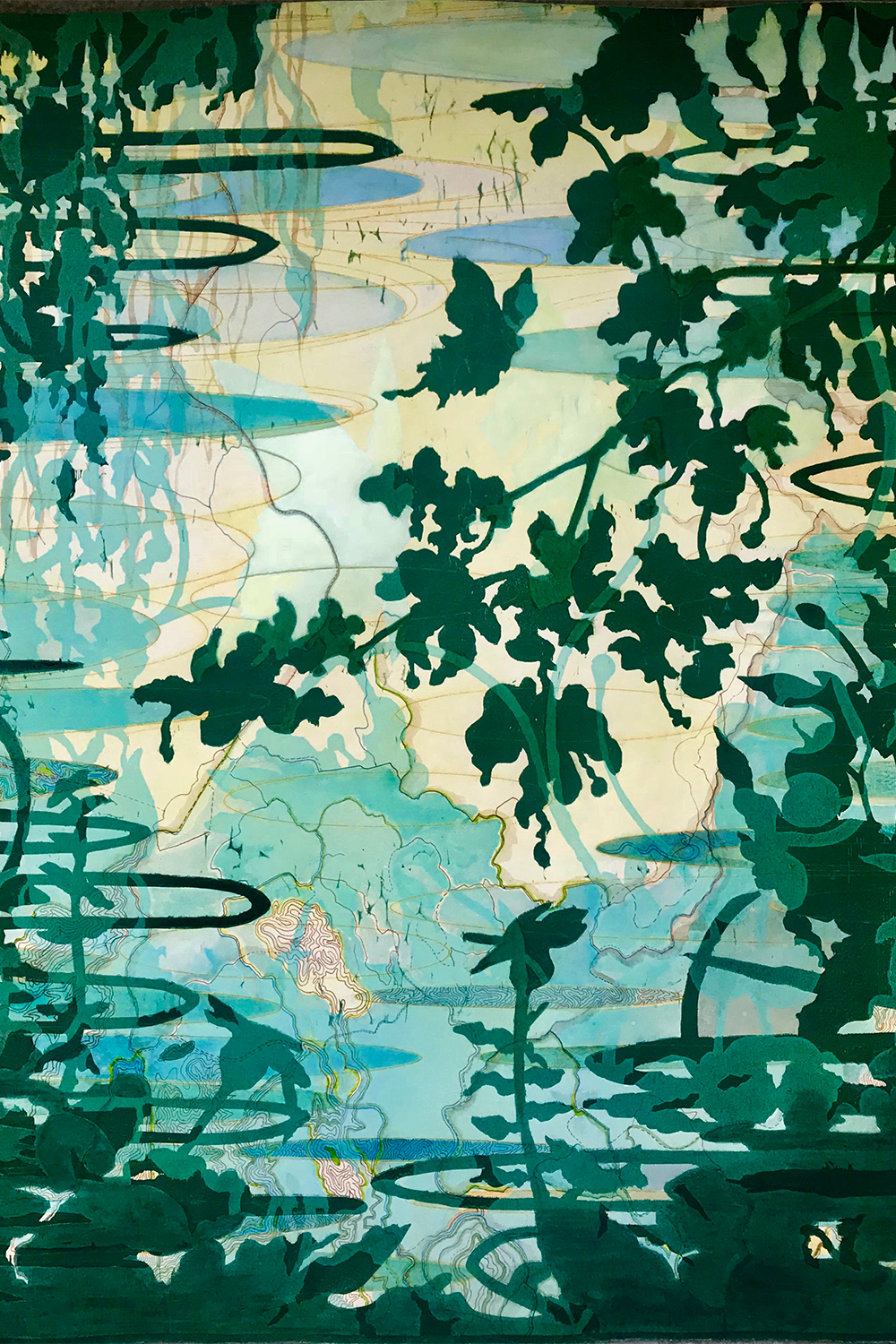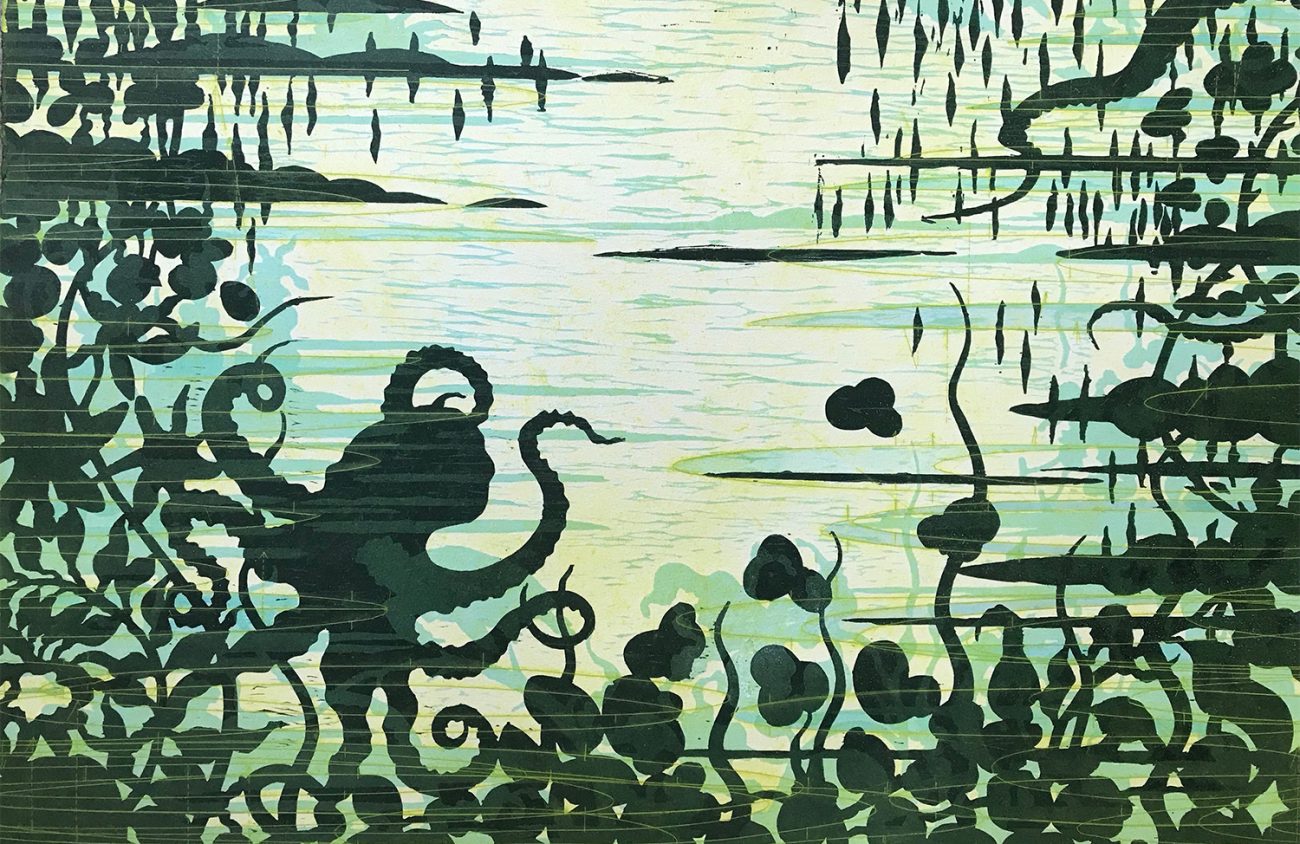Tallmadge Doyle creates a colorful world of magical science in “Underwater Garden,” her show of recent work at Karin Clarke Gallery, taking us not just underwater but also exploring the idea of maps and ultimately touching on realms of pure fantasy — all with perfectly gorgeous colors.
The show, which runs through Oct. 26, includes several distinct series of images, from the small underwater garden series to “unidentified” animal species and another series she calls “mapping flight.”
Her description of a single print, which she offered during a recent interview at the gallery, hints at how richly complex her printing process can be.
“You can see the light-green line through that,” she says at one point. “And then I added color with watercolors and put in the yellow green. And the light blue is a very transparent ink. And the green is a little bit transparent so that I can get this third color here, you know, so I can get these silhouettes.”
Silhouettes that tend to frame her images are something she’s been exploring for the past six or seven years in her work.
Doyle has been working in this vein for years, examining various aspects of nature and science through her elegant, finely crafted and often complicated prints. The visual complexity of her images reflects the multiplicity of processes she uses to get the effect she wants. She combines woodblock printing with copper plate etching and sometimes mezzotint, often finishing off an image with handwork.
Enlarge

Tallmadge Doyle
Because of this intricacy, her editions are small — she makes perhaps only a dozen prints of any particular image.
The current show has a fascination with water and maps.
“The oceans, of course, are rising, and you know what’s going to happen: Maps are going to be changing, a lot. Cartographers are going to be really busy because maps are going to be changing and the coastlines are moving.”
Doyle has been thinking a lot these days about the local effects of climate change. That could spur yet another print series.
“I’m really interested in going to more coastal communities to just be there and talk to people and interact with people,” she says. “Maybe do some collaborative art projects with people who live in coastal communities.”
Doyle has enjoyed a number of artist residencies. In 2017, she had a residency at Playa, an artist colony by eastern Oregon’s Summer Lake. Earlier this year she was at the Brush Creek Foundation for the Arts in Wyoming, and later this year she’ll be at the Ucross Foundation, also in Wyoming.
Each of those trips has provided inspiration for her work.
“When I was at Brush Creek in February, I started getting very interested in geology and how the land changes over time,” she says. “And so I started doing drawings and India ink paintings about that, the different layers of time. Where Brush Creek is, a hundred million years ago, it was a salt marsh, like the Everglades.” ν
